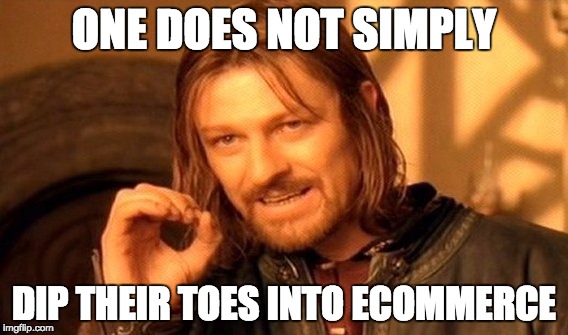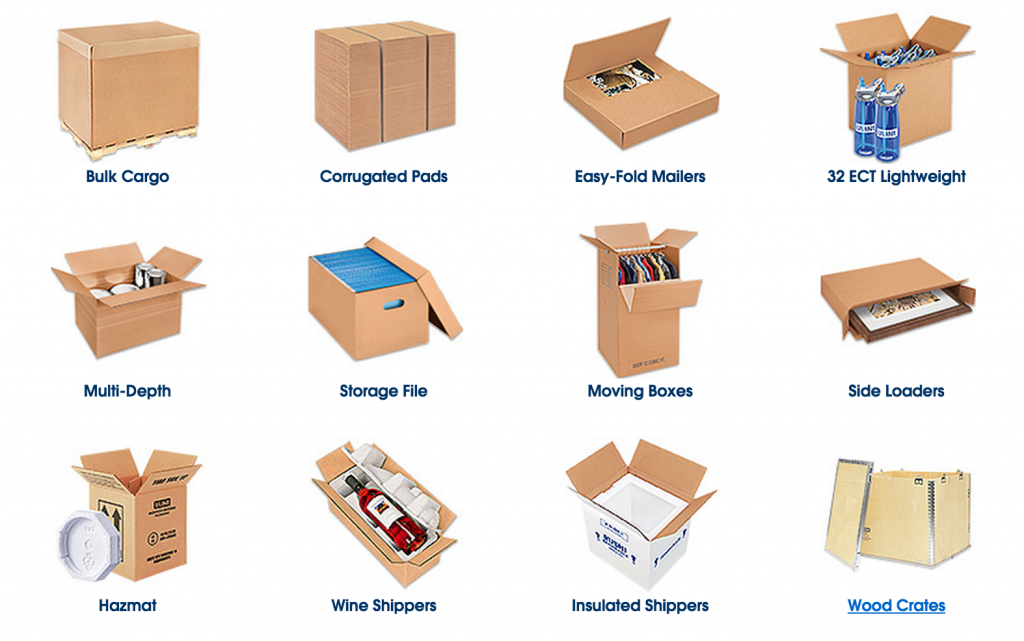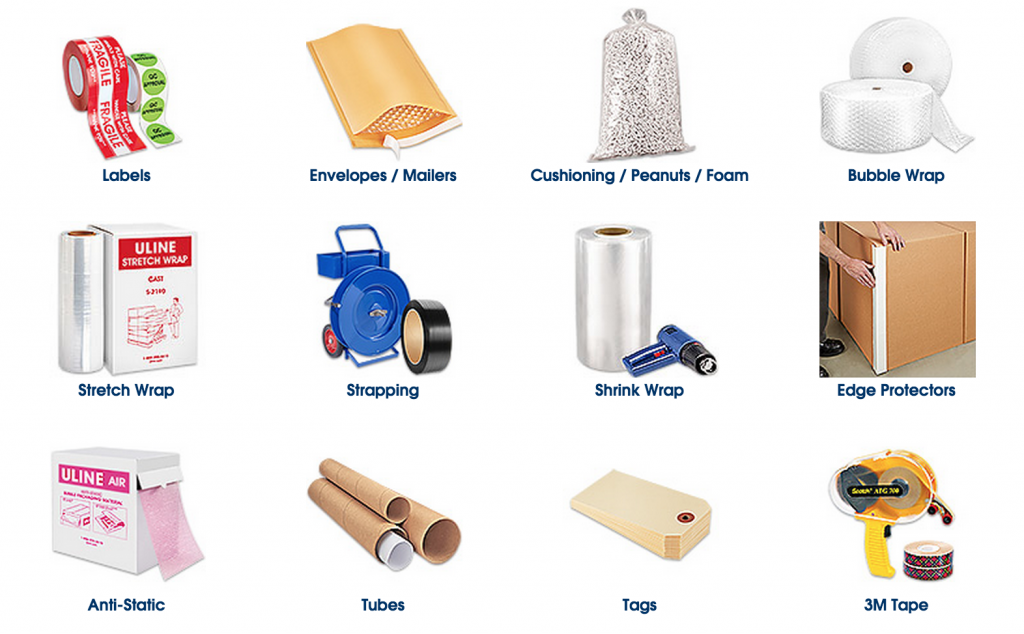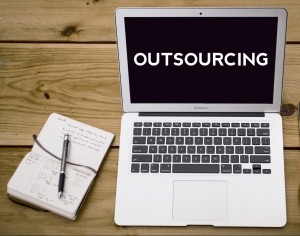Customer Service
Getting Started in Ecommerce: Fulfilling Your Orders
Your website is ready. Your product pages are full of great content. Your site design is a beautiful work of art that leaves a great first impression and inspires trust in your visitors. You’ve gone over every nick and cranny to ensure everything is ready. Twice.
And then you get your first order, and it’s a wonderful thing. Success!
Or is it a success? Sure, someone has given you their money. That’s important. That’s necessary. But it’s not sufficient. What happens now? What processes are triggered after a purchase?
Your website is just a small piece of the ecommerce puzzle. In fact, the majority of what your customers are going to judge their experience on will have nothing to do with the website. As important as the website is, you need to spend just as much time determining what happens after the initial transaction. For some companies, like Zappos, fulfillment is one way they stand out from the competition and gain an edge in the marketplace.
Fulfillment – making sure an order gets to the correct door

Fulfillment also impacts your future in other ways, like potential growth and profitability. Other than the cost of goods sold, order fulfillment is going to represent your biggest cost, and how well you plan and perform has a direct impact on your profit margin.
This post will help get you started asking the right questions and thinking about potential problems down the road. If you plan ahead, you have greater chance of success.
There are typically three options you have when thinking about order fulfillment, and each have their own challenges and advantages.
- Drop Shipping – You don’t own inventory. You just collect payment and send orders straight to a supplier. They then handle the packing and shipping of the products.
- In-House Fulfillment – Where you (and/or your staff) do everything. You store the products, pack the products, and ship the products.
- Outsourcing Fulfillment – Someone else stores the products, packs the products, and ships the products. This might look similar to drop shipping at first glance, but there are key differences discussed below.
These options aren’t mutually exclusive. Sometimes it makes sense to utilize a mix of them, and I’ll discuss that below. I’ll also discuss three broader areas that apply no matter what option you eventually choose:
- Your Return Policy
- Communicating with the Customer
- Thinking about Fulfillment Before Your Website
Drop Shipping
Drop shipping promises that other people do the work – but is that true?

Drop shipping sounds like a dream. You collect the orders and the money, and then you let someone else do all the work. The wholesaler or manufacture spend the time and effort for actual fulfillment. The good drop-shippers hide their brand and offer to show yours on packing slips and other materials, so, to customers, it looks like the products came directly from you.
There are both advantages and disadvantages.
Drop Shipping Advantages
- Less risk, with a low barrier for entry. You can get to market early. You don’t need to invest in large inventory. You don’t need to manage any complex logistics. If you can get the orders, you can starting selling and shipping immediately.
- Easy to offer a wide selection of products. Since you don’t carry inventory, you can put whatever you want on the website without worrying about where to store it and how to ship it. This is an especially nice boon for larger products that have a higher cost.
- You don’t spend time packing and shipping products. Instead, use that time on things that add more value to your business. However, and this is related to one of the main disadvantages, don’t overestimate this advantage.
Drop Shipping Disadvantages
- Less risk, with a low barrier for entry. Yes, the main advantage is also a disadvantage. More people will be doing it and competing for the same space you are, selling the exact same products.
- Lower profit margins. With less risk comes lower profit potential. You will get less margin per product, and sometimes there is even a separate dropship fee. This can really limit your options. For example, can you even afford to offer free shipping? Advertising?
- Difficult to come up with a unique selling proposition. Why should someone buy from you instead of the 57 other people selling the exact same product? With dropshipping, you eliminate a whole pile of processes and interactions that could have been used to differentiate yourself from the competition. Where are you adding value to the transaction? With dropshipping, it can’t be in product sourcing, acquisition, or shipping.
- Lack of control. If one of your unique selling points is going to be customer service, you don’t want to drop ship. Usually, you are limited to how you present the packaging and what marketing material you can include. And what happens if you start getting 50 orders per day? Can the supplier keep up with that demand? If not, tough luck. You are at the mercy of someone else’s capacity, and there might not be much you can do about it. And what if they decide to stop selling the product?
- Savings on time and effort is minimal. A large amount of the work you have to do to make an ecommerce site successful will still need to be done, even if you dropship, but with far less flexibility. You will need unique product descriptions and good photography. Someone will need to upload all the data and manage the website, as well as offer customer support. A good design and brand for the website is necessary to build trust, stand out, and leave a good first impression. And then there is other content creation and marketing, which might even take more time, since you are trying to compete with so many more people.
Reasons to Dropship
Because of these disadvantages, dropshipping probably shouldn’t be your main strategy. But there are good reasons to use it.
- Your product is unique, even if dropshipped. If you are offering custom prints, for example, and the printer offers a drop-shipping service, this would be a good way to get started. You can test the demand for your ideas before investing in inventory. No one else is selling your exact product, and so some of the disadvantages no longer apply.
- You want some backup. If you run out of inventory, its nice to be able to still ship product without having to wait for a large shipment to arrive. Drop shipping can help fill the gaps.
- You want to supplement your current offerings. Some products have good synergy together when used as up-sells or cross-sells. If you already have a successful product line and ecommerce site, drop shipping is a good way to test new products and increase the average order size. For example, if you sell unique exercise videos, you might try adding health supplements. Or, if you have invented this great shovel, then offering other gardening and lawn supplies with drop shipping might make sense.
- When ecommerce is not your prime business model. Perhaps you have a blog that is trusted and popular within a certain niche. Or you help manage an active, online community. Maybe your main source of revenue is from consulting and speaking. This means that anything you make with ecommerce is just supplemental, gravy on top of your main revenue generator. In this case, drop shipping can be a quick way to add some additional value to your customers while increasing your bottom line with little effort and less risk. For example, if you are a well known dog trainer that makes money from speaking, consulting, and advertising, you might want to sell some dog-training related products. But you don’t want to warehouse or manufacture the products yourself. That would just pull you away from your main business.
- You want to test and validate a market before committing more resources. This is a valid reason, as long as you understand that, as written above, your time investment will still be considerable. One does not simply dip their toes into ecommerce. If you want to truly test something to know if it will be viable or not, expect a lot of work and/or a lot of money.

Sources for Finding Drop Ship Suppliers
You’ve gone over the reasons above, and you think drop shipping is a good option for you. Where do you find reliable and trustworthy drop ship suppliers? You could do your own online searches, go to trade shows and look at trade magazines, and network in other areas. This will be time consuming. It can also be tricky, as you want to be sure and work with someone you can trust.
Your best initial bet is to use a directory. The good ones are not free, because they take a lot of work to maintain, but the time you’ll save could be worth it. Here is a list of some top directories, compiled from both personal experience and general consensus.
- World Wide Brands. This is the top directory, in my opinion. It’s always being updated, you can search and filter with several criteria, the shear number of suppliers will almost overwhelm you, and they have great customer support. You’ll pay a one-time fee of $299, and get lifetime access. Some suppliers are selective with who they work with, and coming through World Wide Brands will give them a hint that you are serious.
- SaleHoo. This is another trusted directory that has been around for a while. You can get access for just $67/year. If the upfront fee for World Wide Brands has you in sticker shock, SaleHoo might be your best bet. However, they sell a lot of other periphery services, including an ecommerce platform, so be prepared for the hard sales pitch every step of the way.
- WholesaleCentral. This is a short list, but it’s free. However, you’ll want to do your own due diligence to ensure a business is trustworthy.
Keep in mind that drop shipping suppliers are really just wholesalers that will ship single quantities straight to customers. They are not some unique, special snowflake. Some wholesalers might not advertise drop-shipping, but offer it if requested. If you find a supplier that sells the product you want to sell, but it doesn’t look like they drop ship, pick up the phone and ask. The worst thing they can say is “no.”
In-House Fulfillment
Packing and shipping the products yourself is the most rewarding option. You get the most profit margin and you maintain 100% control. On the other hand, its also the most work and exposes you to more risk. There are several details you want to think about before deciding if this is the strategy for you.
Sourcing Your Products
Like with drop shipping, you can find a supplier of products that already exist. Sometimes they can provide some customization to those products. One form of this is called white labeling, which is often used for products like nutritional supplements.
Another way is to actually create your own product by buying bulk supplies that you then package yourself. This is, of course, a lot more work and depending on what you are doing, could be subject to loads of regulatory red tape. But it is an option. For example, you could buy in bulk all kinds of herbs and spices and mix the ingredients for a custom seasoning.
World Wide Brands, mentioned above, can also be used to find these types of wholesalers. Two other great resources are:
- Alibaba. This is the main site for global sourcing. They have a wide directory of suppliers from all over the world, and maintain strict standards for their Verified Supplier list. You can even go through their quote process and describe exactly what you’re looking for.
- GlobalSources. While not near as polished or reputable as Alibaba, you can find some great suppliers here.
The last way to source a product is to get something manufactured 100% from scratch. Have an invention you want to start selling? Shop around for a manufacturer, get a prototype, and find out how much it would be to get small runs produced. While this is beyond the scope of this post, this article at Shopify goes over some of the basics of manufacturing a product, and I’d encourage you to read it. For help finding manufacturers, check out ThomasNet.
Some things you’ll want to learn about your supplier:
- How long does it take you to receive new inventory from them, from order to arrival at your doorstep? You want to get new stock before you run out of the current stock.
- Do they have a maximum capacity? You don’t want to spend a whole bunch of money on marketing only to find out that they can’t fulfill your requirements with a quick enough turnaround.
- Do they have a good reputation? DHL provides some good tips for due diligence of potential suppliers.
Storing and Warehousing Your Products

If you already have retail or office space, then you might be ahead of the game. If you have the extra room, then great! But there is a good chance that the extra inventory required will leave your space busting out of its seams. Again, you need to plan.
You can also store your inventory in your own home. A basement or garage could be adequate. However, keep in mind that your regular home insurance will be very limited in covering any loss related to a business. If you do end up storing inventory in your home, look into acquiring supplemental insurance.
Know your product. Here are some questions to ask.
- Does it need to be kept at a certain temperature? Humidity level?
- How many can be stacked on top of another before it starts to damage the product underneath?
- How can you store your products so you can find them easily? Not as big of a deal if you are just selling 2-3 products, but it can get out of hand quickly. Stay organized. Whatever system you choose, you don’t want it to just reside in your head. Document it, in case you need to train someone else do it.
- Will you need special shelving?
You need to become aware of your storage requirements early, because any costs incurred storing your products must be reflected in the eventual price of your product. If your inventory management pushes your price point beyond what it will sell for, you have an obvious problem.
When just getting started, its unlikely you’ll need any sort of software to track and manage your inventory. Oftentimes, a simple spreadsheet will work just fine, or your ecommerce platform can handle it. That being said, there is specialized software available that integrates with popular ecommerce platforms, and they might be worth checking out, depending on your specific needs.
Delivering Your Products
The whole point of this enterprise is to eventually get a product to a customer. How you manage the delivery can make or break your business. You should be aiming for three goals with your orders:
- Pack them securely
- Fulfill them quickly
- Notify the customer of the status (see below for more details on this)
Again, its important to know your product. Size, shape, weight, and fragility all play a huge roll.
What will it take to ship an order so it arrives looking pristine, and not like a few toddlers played a quick pickup game of soccer with it?
Packing, Packaging, and Labels

 What packaging do you need to ship one product? Two products? Four different products to the same address? You need to be prepared for these possibilities.
What packaging do you need to ship one product? Two products? Four different products to the same address? You need to be prepared for these possibilities.
I recommend you test your packaging by mailing something to yourself a few times. Check the condition. If the product gets damaged in any way, how can you mitigate that?
Keep these things in mind when testing and choosing packaging:
- Get the smallest package available in which your product will fit. Bigger sizes mean larger shipping costs.
- Keep things tight to prevent movement. The less movement, the less potential for damage.
- Keep supplies as light as possible. The more weight, the larger the shipping costs.
How you package your products is also an integral part of your branding and marketing, for good or for ill. It’s a great opportunity to delight your customer. So be thoughtful. If you are selling used car parts, you probably don’t have to worry too much about presentation. But if you are selling any type of “premium” good, pay extra careful attention, as the presentation is part of what your customers are paying for. For example, TrunkClub inspires customers to post videos of opening their latest purchase.
Branded shipping boxes, like Amazon and Lootcrate, are options but can be expensive. If you can add your own touch without breaking the bank, you should do it. Sometimes, just choosing a color other than brown for your boxes can go a long way. If you have a great logo, slapping a custom sticker on the outside of your package might be all you need to do.
Be strategic. If it costs you almost nothing extra to ship someone two products instead of just one, think about how to encourage those larger orders.
There are two places I recommend to buy supplies:
- Uline. Probably the most popular choice, with a wide choice of boxes, padded envelopes, bubble wrap, tape, and anything else you can imagine. They lay out their quantity discounts in easy to read tables. Easy to search for specific sizes as well.
- ValueMailers. A good option in case you can’t find what you need from Uline, or for a sanity check on prices for certain supplies.
Don’t buy your packing supplies from Office Depot or Staples, as you are going to pay huge premiums. These retail stores are for people who don’t ship things that often. You need to buy in bulk and get the discounts associated with bulk purchases.
What to Charge
How do you manage your costs so you actually make money on an order? To know how much you should charge for shipping and handling, you need to find your average cost per shipment. While you might not know this with absolute certainty until you have several orders under your belt, you can make reasonable guesses and estimates. This is another area where testing your packages and shipments can be beneficial.
Calculating an estimated cost per order can be simple. Supplies usually have the total yardage, or some unit of total length. For instance, this tape from Uline comes in roles of 110 yards. Once you figure out about how much tape you use per order, its a simple formula to convert that to an actual dollar amount.
Let’s say you use about 2 yards (6 feet) of tape to seal a box and attach a label.
110/2 = 55 orders out of one roll. The price per roll of tape is $2.70. Dividing that by 55, we get about $.05 per order. Always round up with these types of estimates.
So the equation looks like this: [total price]/([total length]/[used length]) = [price per order]
Run this for all of your common shipping supplies, and add them up. You now have a good baseline to add to your actual product cost. You can add it to the shipping fee or include it in the price of the product.
And at the end of the day, don’t forget to value your own time in these calculations. Don’t sell yourself short. How many orders can you fulfill in an hour, and how much do you value your time? Let’s say you value your time at $100/hr and could fulfill 10 orders in an hour. That’s $10 per order. That isn’t an amount you should add to anything, but it shows you how much profit you should be aiming for per order you ship out. Sweat equity is a real “cost” to take into account.
For shipping, you have a few options on how to set prices:
- Charge from a live quote. Most ecommerce platforms have the ability to pull live shipping quotes based on certain criteria. Some allow you to mark it up a certain percentage so you can cover your packaging and handling costs. The main problem with live quotes is that you risk sticker shock, and therefore cart abandonment. Its generally not the best way to go unless your have an expensive, but lightweight product line.
- Offer free shipping. While free shipping is a great promotional strategy to encourage higher orders, it can also be your entire strategy. Just raise the markup of your product a little bit to make up the difference. It’s a psychological thing. People would rather buy a $70 product, rather than a $55 product with $15 shipping, especially when the word FREE is involved.
- Offer flat rates. The rate can be based on order value or order weight. Or it can just be your average cost for all orders. You win some, you lose some, but in the end it all evens out. USPS makes a flat rate option attractive thanks to their Priority Mail Flat Rate envelopes and boxes. You can get as granular as you want, where each product has it’s own flat rate price, which might be waived if included in an order with additional products.
Beware of international shipping. It’s always going to be more expensive than you think, and take more time than you prepared for. When first starting out, you might not want to offer international shipping. If you need or want to ship internationally, sticking with the USPS Priority Mail Flat Rate boxes is always good option, as the cost will always be transparent and easy to plan for. Shipping to Canada from the US is cheaper than other countries, but the price can still surprise you.
What else to put in the box
Besides the product itself, you want to take advantage of the opportunity of getting something in front of your customer’s eyeballs. Consider these options:
- Free, surprise product
- Coupons for their next order
- Request for a review
- Request for a satisfaction survey
- Stickers with your branding
- Enrollment information for your loyalty program
Plan to scale
Start tracking (or estimate early) how many orders you can pack and ship in a week. How many in a day? An hour? What is the number where you stay sane? At what point will you need to hire help, and will the cost be feasible? Do you even want to take on the burden of employees, which means more paperwork and more taxes?
Do yourself a favor and buy either adhesive labels for your regular printer, or a specialized label printer. Writing labels by hand, or manually taping them on boxes, is something that will get old really quick and cause you to hate your new job. Along these same lines, a service like ShipStation can make buying, printing, and tracking shipping much easier, and can enable you to remain a one-person operation for much longer.
This topic segues nicely into the next strategy for fulfilling orders: outsourcing the process.
Outsourcing Fulfillment

Outsourcing your order fulfillment is a good way to get some of the benefits from dropshipping while maintaining a higher profit margin. You still purchase product in bulk, but instead of storing the inventory yourself and personally fulfilling orders, you let someone else handle it. One term used for these is fulfillment house. You still own the products, someone else just manages them for you, similar to how someone who owns real estate might hire a management company to take care of the daily grind required to maintain everything.
Fulfillment Outsourcing Advantages
- You don’t deal with the hassle of storing inventory and packing and shipping orders. This is also one of the key advantages to drop shipping, and it’s a big one. Take all of that stress and put it on someone else who can better handle it. Focus more on managing and marketing your business.
- Easier to scale. If you suddenly need to double the amount of products you keep on hand, or the number of orders increases, any fulfillment service worth their salt should be able to accommodate and help you easily meet your new demand.
- Potential savings on shipping and handling costs. This won’t always be the case, but you might end up paying less per order to ship than if you did things yourself. Fulfillment houses and services will probably have great deals in place with shipping providers, and get most of their packing supplies at a greater discount.
- Storage costs are much lower. If you need dedicated warehousing that isn’t your basement, the cost to “rent” space at a fulfillment house is going to be much cheaper than other alternatives. It can also grow or shrink as your needs change.
- Built-in inventory management software. The better fulfillment houses offer you sophisticated and feature-rich management software to help you spot potential problems and inefficiencies, such as running out of a certain product too fast. They need something similar to manage their own internal processes, so it makes sense to expose some of the benefits to their customers.
- Easier to sell internationally. Many fulfillment houses have warehousing in different countries, and can help make it feasible for you to expand.
Fulfillment Outsourcing Disadvantages
- Strict requirements. In order to ensure efficiency for all clients, fulfillment houses have several automated processes. You fit into their process, not the other way around. They are not going to bend the rules for your special case. If you’re not careful, complying with these requirements can be as time consuming as packing and shipping orders yourself. Some typical requirements:
- Each product much be in its own self-contained packaging. If not, you might incur extra fees (see below).
- Each product type or SKU needs its own barcode that is on every product of that type.
- Inventory shipped to the fulfillment house needs a special barcode and other information in a certain format. (Will your supplier comply with these requirements?)
- A packing list in a certain format might be required.
- Extra fees. The fulfillment house has to make money somehow. This can be in the form of a per-order fee, a monthly fee, and/or a warehousing fee. If you want special inserts placed in order shipments, such as marketing material, expect to pay extra for those. Orders that have over a certain number of unique products can also incur a special fee.
Reasons to Outsource Fulfillment
When does it make the most sense to outsource fulfillment?
- You have a single product but expect a lot of orders. This is really where fulfillment houses shine brightest. They can help you keep up with demand, and with just a single product, dealing with their requirements is not too difficult. If your product is packaged in a way that is already suitable for shipping, even better. This allows fulfillments to just slap a label on the package and send it out the door, a process sometimes referred to as “lick-and-stick.”
- Your products are simple, discreet units and require no special knowledge. Fulfillment houses work best when the product can be taken off a shelf and stuffed into a shipping box without any extra thinking involved. A business that sells parts for tool repairs would be a horrible candidate for outsourcing, as it requires special domain knowledge and probably incurs a lot of customer support requests. But one that just sells screwdrivers would work just fine.
- Your business is highly seasonal. You don’t want to have to hire extra people for just a couple of months of the year to handle the extra, and temporary, load of orders. You can also scale down your inventory, incurring lower storage costs. If you had your own local warehousing, then that would be a fixed cost, no matter how many items you stored there.
It’s always possible to test outsourcing with just a single product to see if it works for you, and then gradually move more of your inventory to the outsourced service.
Just remember to check: what is your core competency? What do you want it to be? Whatever it is, don’t outsource it.
Fulfillment Houses and Services
This is by no means a comprehensive list, but it will help you get started with your research.
- Shipwire. A modern company that offers a lot of supporting tools. Big on automation, and they are already integrated with a lot of ecommerce software. They cater to businesses both small and large.
- Amazon. They will fulfill orders from any channel, but they really shine when you also want to offer your products through the Amazon website itself. Customers can take advantage of free shipping and Amazon Prime.
- efulfillmentservice. Not as polished or sleek as Shipwire, but they have been around a long time and are a trusted name. They are worth looking at, and offer a nice free trial.
Your Return Policy
You need to have one, and it should be transparent, clear, and easy to find. Even if your policy is simply that you don’t accept returns, and purchases are non-refundable, that needs to be in writing.
No matter what you do, don’t make your customers jump through hoops lined with red tape.
Your return policy can also be used to help get that initial sale. Squashing fears and objections is sales 101, and a well-written return policy can help you do just that.
This topic has been covered well elsewhere, so here are a couple of resources to get started:
- 9 Tips on Creating an Ecommerce Return Policy
- Effective Return Policies Save Money and Earn Business
If you do end up paying for the return shipping, consider emailing them a PDF of the shipping label that they can just print out. Since you are sending something to their inbox, don’t neglect to try and retain them as a customer. Since they are returning an item, chances are that they are having a negative experience. Try to turn it into a positive one.
Above all, figure out why someone is returning an item. Pick up the phone if you have to. You want to ensure you aren’t making an easy mistake that is costing you money.
Keeping the Customer Informed and Happy
Remember phones? Don’t be afraid of them.

An informed customer is usually a happy customer. Even if things go wrong, if you have kept them abreast of the situation every step of the way, they will forgive quite a bit.
- Offer a phone number. It gives customers a peace of mind, and can even increase your conversions.
- Send an email every step of the process. When the order is made, when processing has begun, and when the order is shipped. Then send a follow up email to make sure everything is alright. Transactional emails are a great way to delight the customer while serving an important purpose, so send them whenever you have a chance.
- Make it easy for them to view their order status and tracking number.
- If there is a problem, tell them quickly and be honest. Work to make things right.
Think about Fulfillment Before Your Website
Put some thinking into what you are going to be selling, and how you are going to get these products to your customers before you start shopping around for a website or platform. These decisions can help you make better decisions down the line and better inform the direction of the website itself.
A lot of things are going to be the same on your ecommerce site regardless of what you sell, and so a minimal viable product is possible. But knowing what you are going to sell and how you are going to fulfill that sale can help inform your choice of ecommerce platform, and it can help inform customizations that will both make your job easier down the line and help make your customers happier.
Here are some examples:
- You want to do flat rate based on order weight. Can you put the weight per product, and does it give me access to the total weight so you can set the proper shipping rules?
- Can it pull live quotes from your preferred shipping provider?
- You receive inventory numbers in a certain format. Can the software import it?
- You want to send an email for every step of the order fulfillment process. Does the platform make this easy, and do you have full control over the email text?
- Is there a place for you to enter an order’s tracking number, and does it automatically trigger an email to the customer?
- Can the website generate nice looking packing lists that are easy to print out? Can the lists have the location of the products, like bin and aisle numbers? Will you need to use separate software for this, and if so, can the website integrate with it?
- You’re drop shipping products. Once an order is placed on the website, can you automatically send an order in the right format to the correct supplier?
- You have a few high priority items. Can the website notify you when the stock hits a certain threshold?
- You plan to have at least a few employees to help with fulfillment. Can the website help you assign orders to certain people? Does it allow limited user accounts for users who just need to look at completed order data?
All of these things, and much more, will be possible through customization, but that can get expensive. If your budget is tight, you’ll want to start with an ecommerce website that hits your most important items out of the box, and already integrates with a lot of services. So prioritize your needs. Get some quotes for what it will take to customize in the future, because you don’t want to commit to software that is hard for developers to work with.
Take some time to really think through your process and what role you want the website to have in it. What emails do you want to get yourself, if any? What emails should go to your customers? What information do you need to be able to see at a glance, what communication needs to be triggered and when? Write it out. Make a chart. Have it as a reference.
Things change. Prices go up. Suppliers change guidelines. Businesses can go out of business. What you decide to do now might look different six months from now. As the wise Mike Tyson said, “Everyone has a plan until they get punched in the face.” But you still want to have a plan. Something to shoot for. This plan will change, and that’s fine, but you need a clear direction to start with.
Conclusion
Remember, the time a customer spends on your website placing an order is a small fraction of what constitutes their entire experience. In ecommerce, fulfillment is everything. A promise is literally worth nothing if it is not fulfilled. A successful checkout is exciting and necessary, but it’s only the first mile of a marathon, so make a plan and learn to follow through. I hope this guide will help get you started on the right path.
What are some challenges you’ve faced while fulfilling your orders? As an ecommerce customer, what could the company have done better to improve your experience?